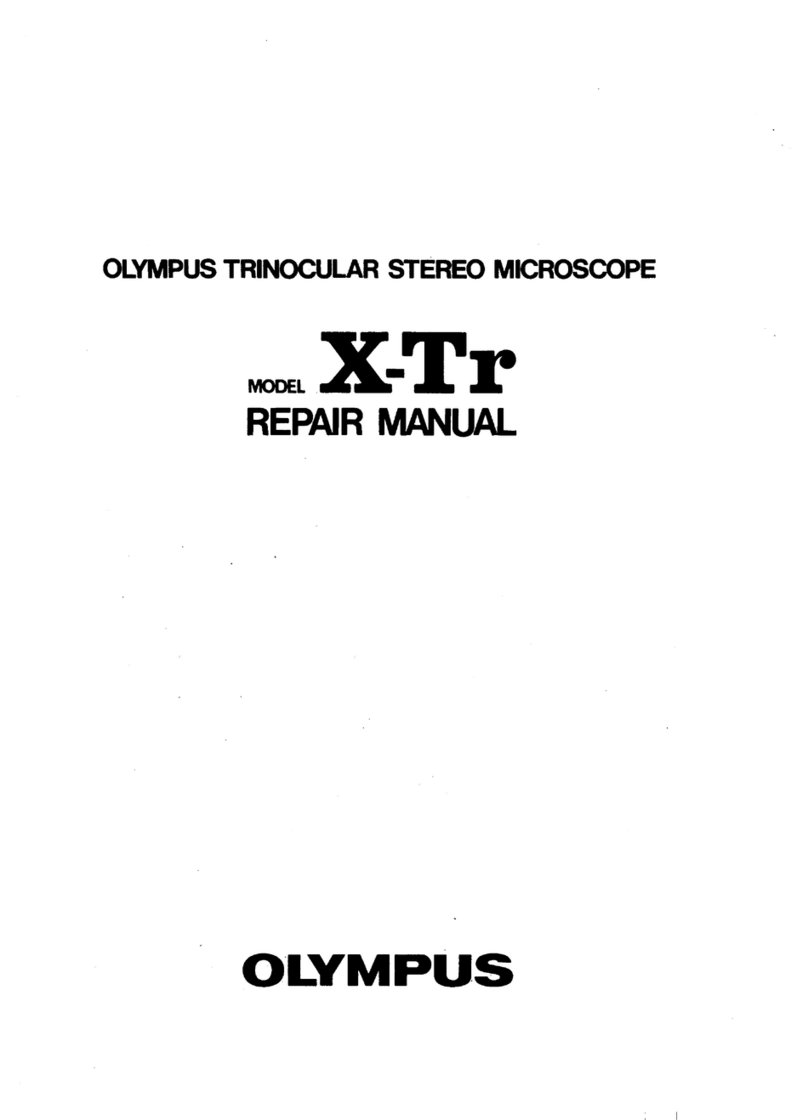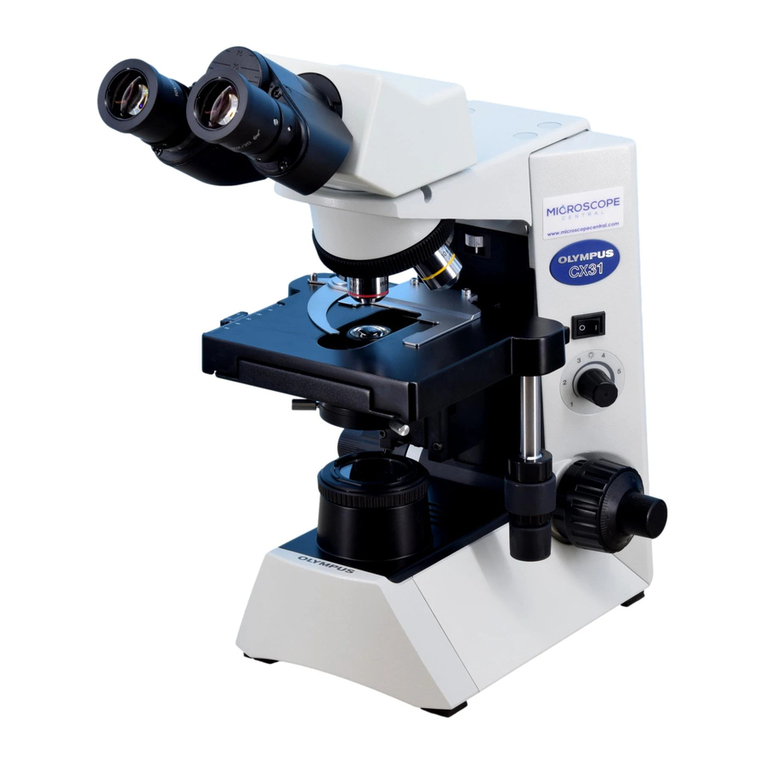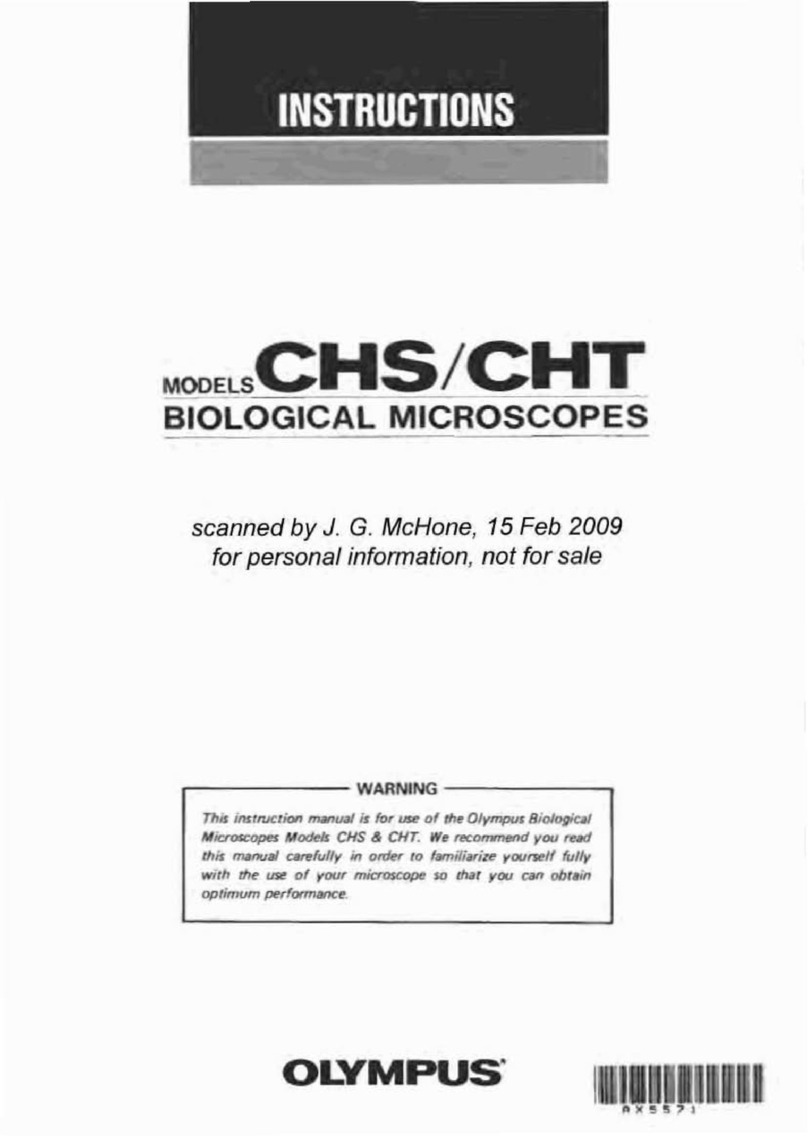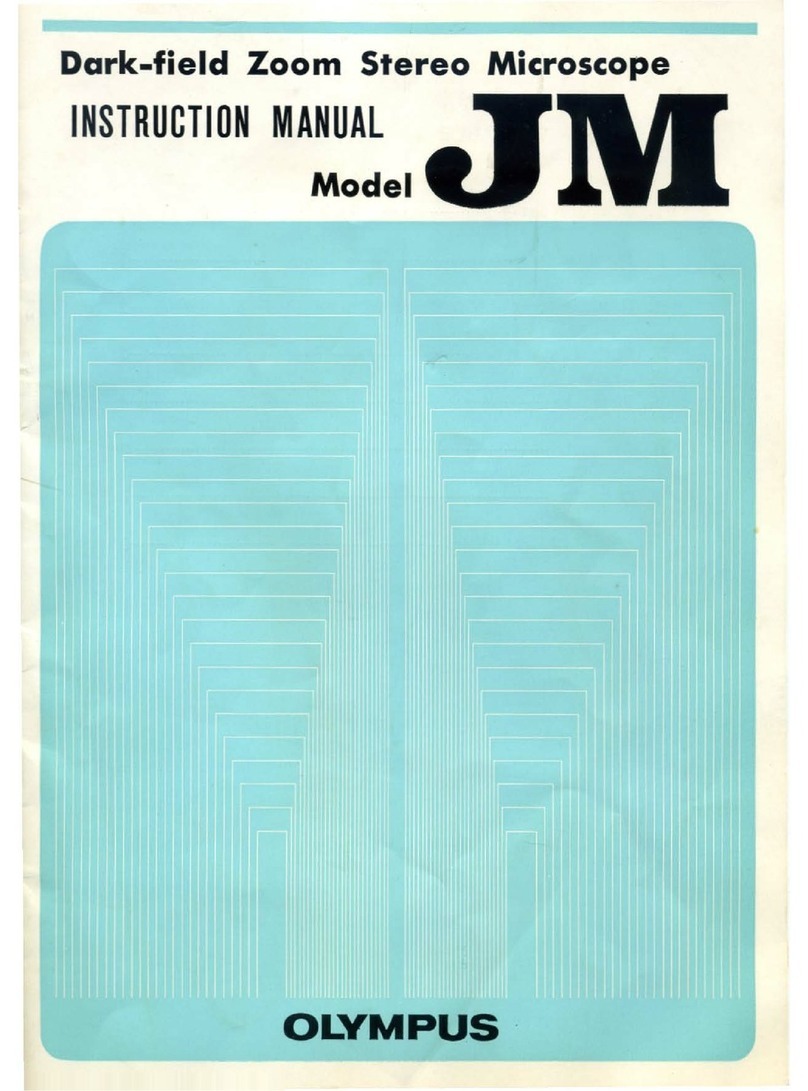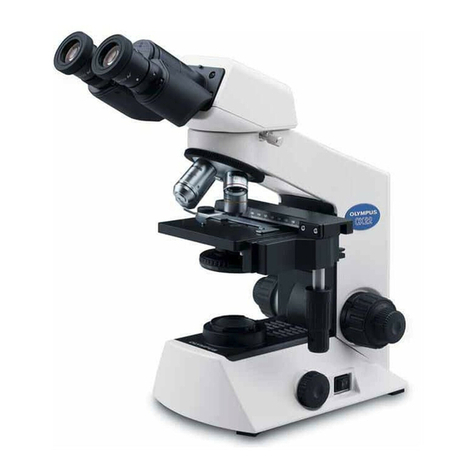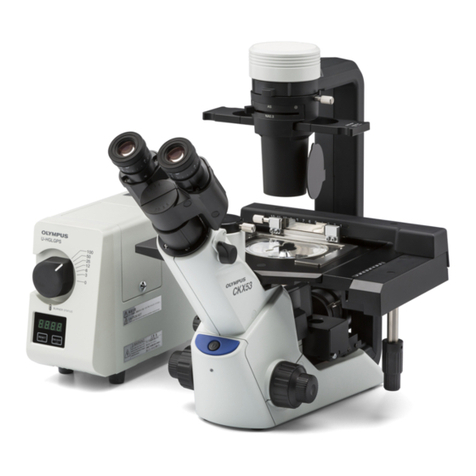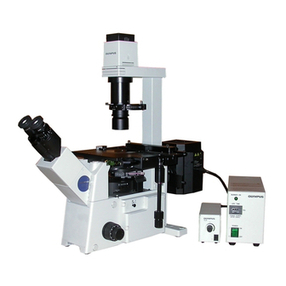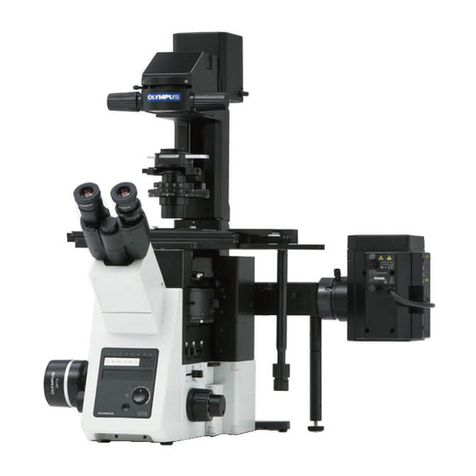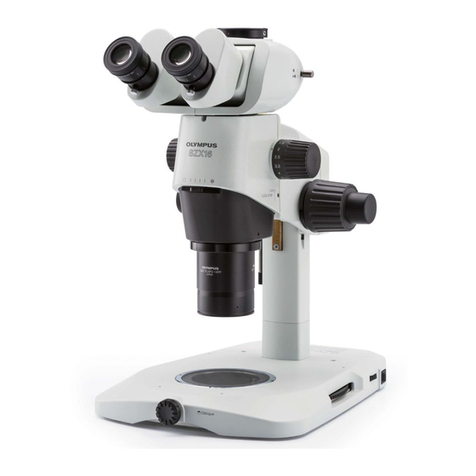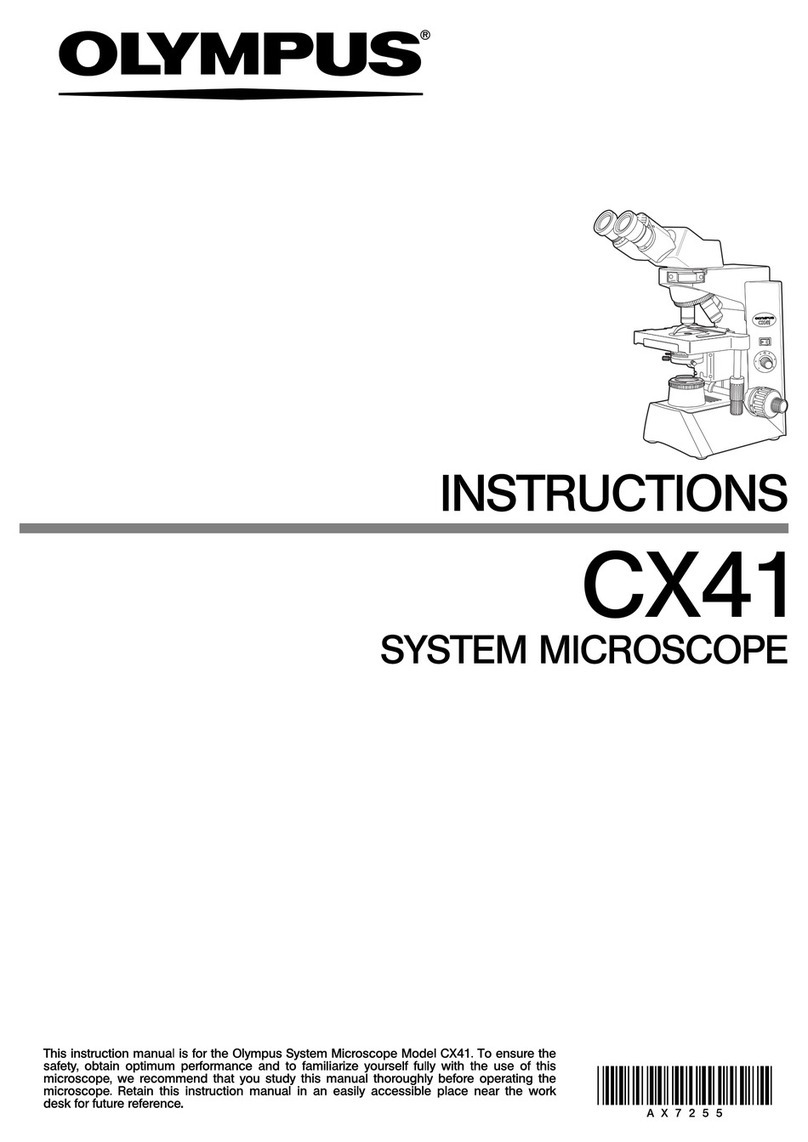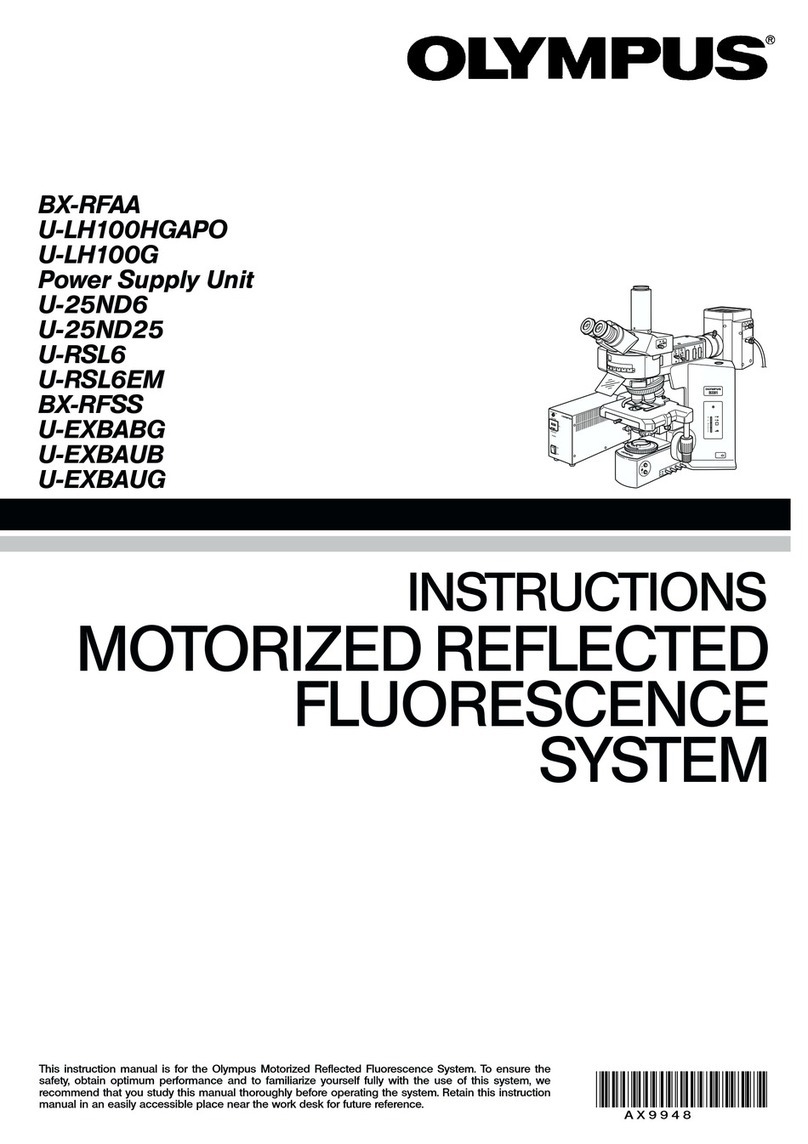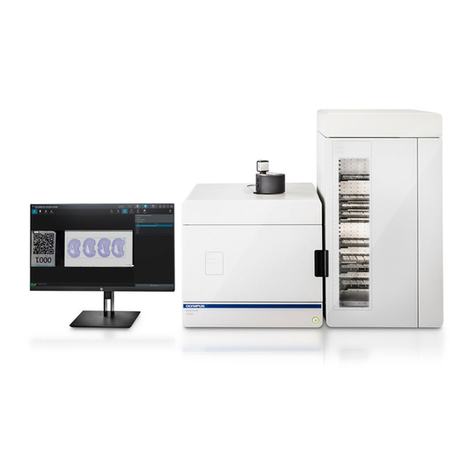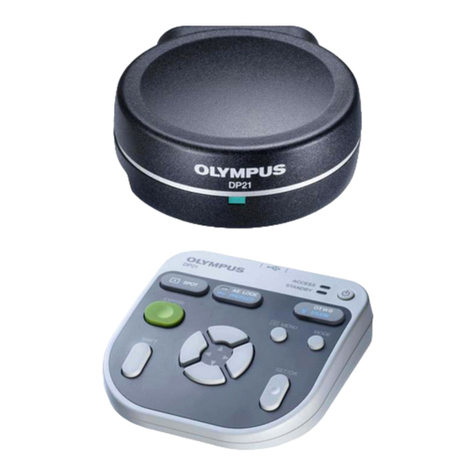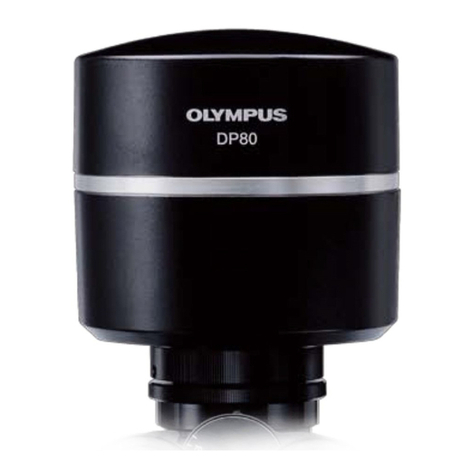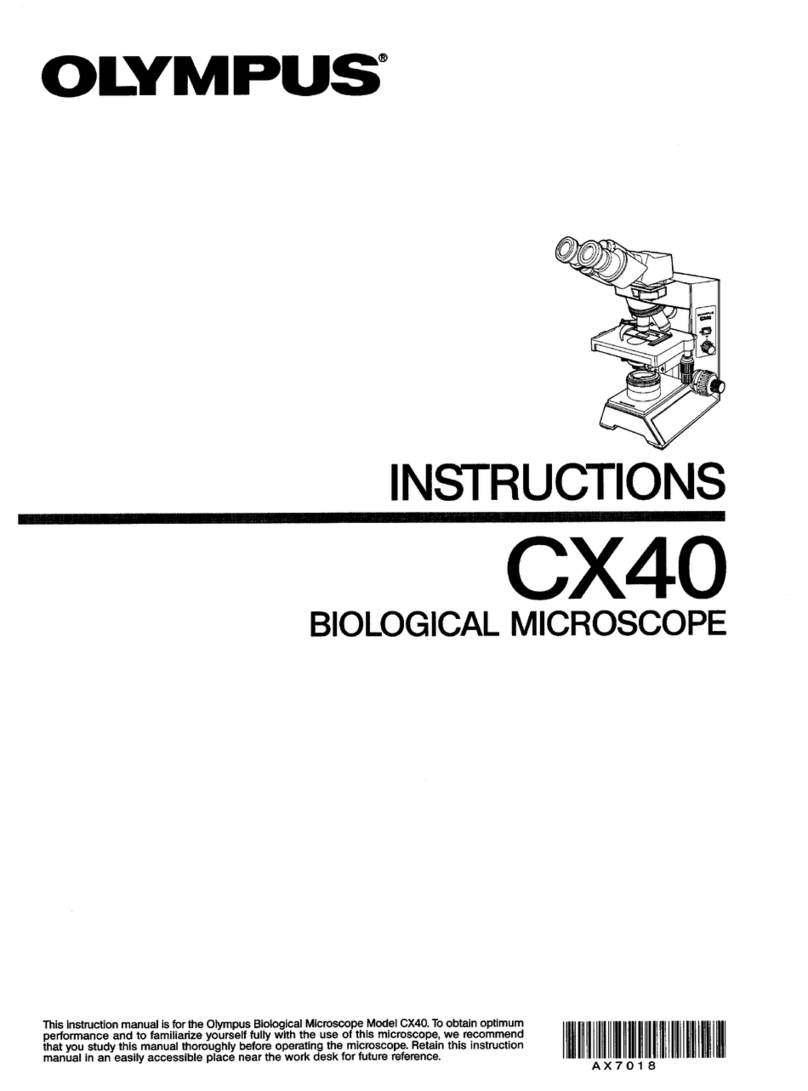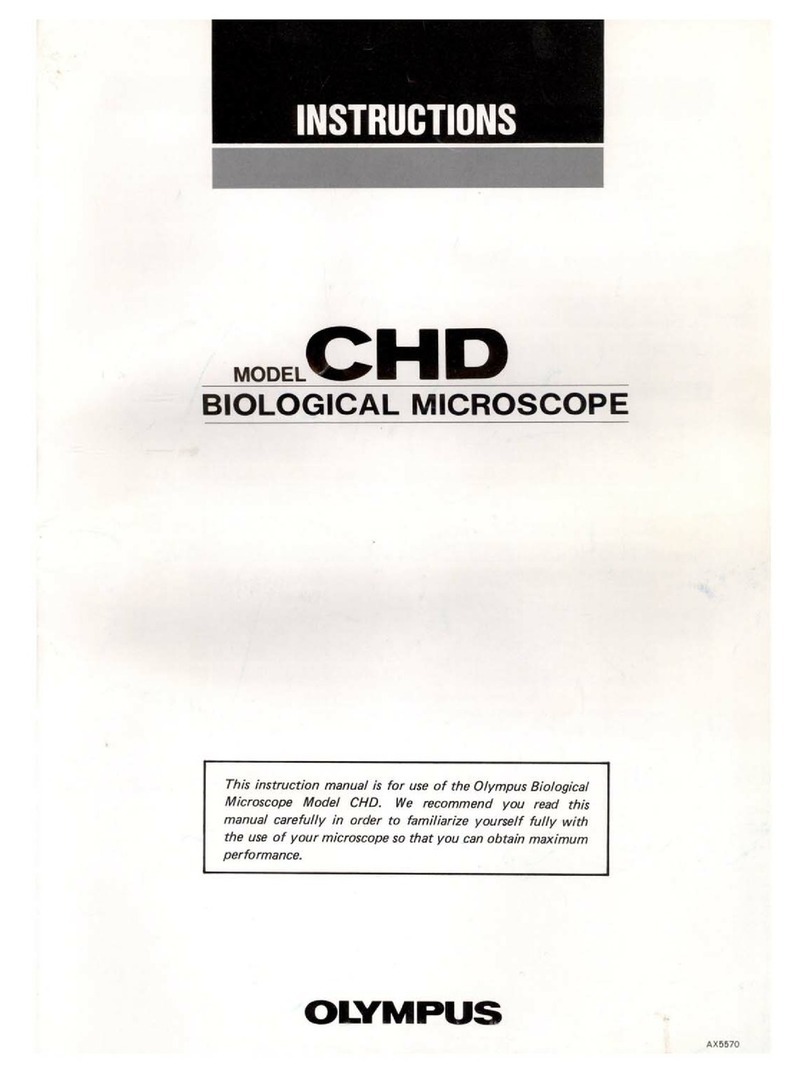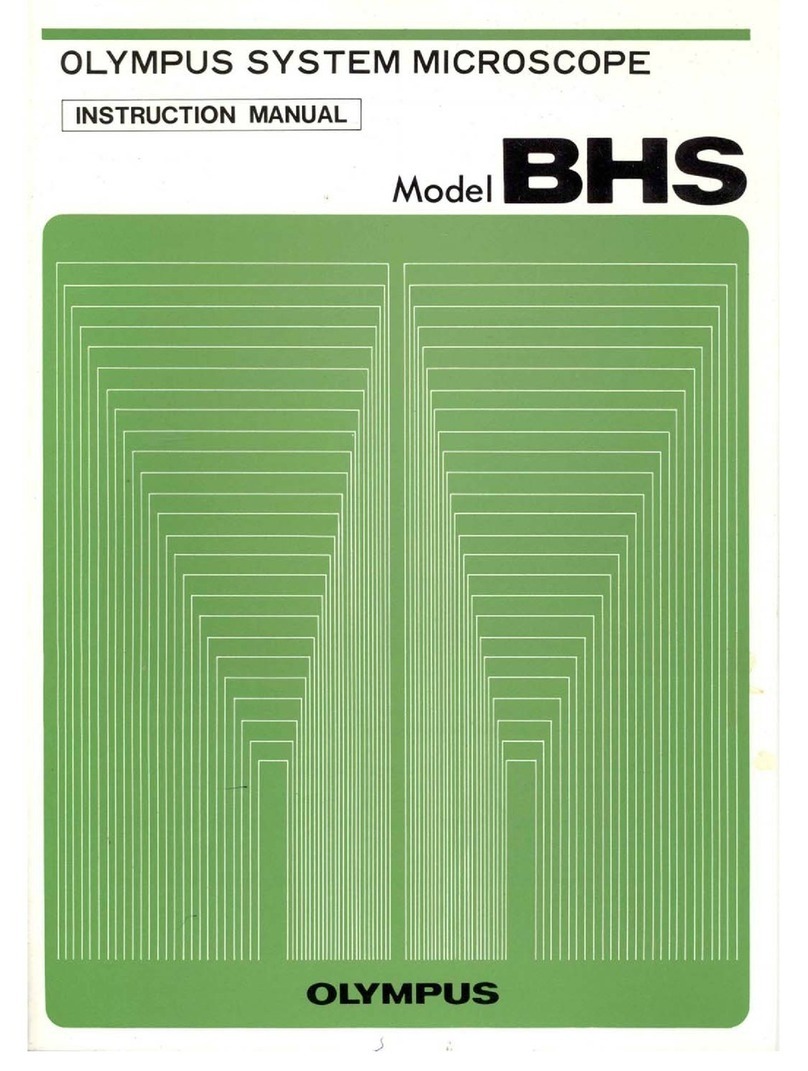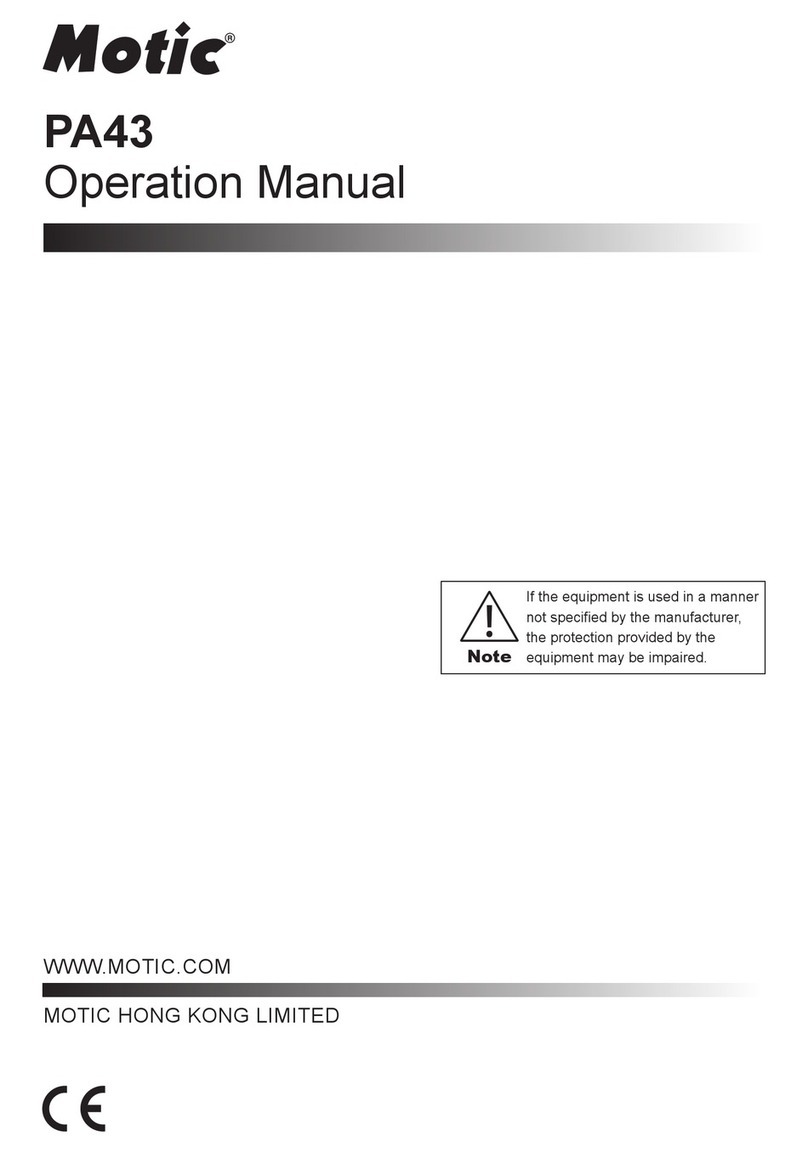
2
U-UVF248A
SAFETY PRECAUTIONS
Safety Symbols
The following symbols are found on the unit. Study the meaning of the symbols and always use the equipment in the
safest possible manner.
l
Explanation
A high voltage (1 kV or more) is present. Be careful against electric shock.
Symbol
Indicates that the surface becomes hot, and should not be touched with bare hands.
Before use, carefully read the instruction manual. Improper handling could result in injury to
the user and/or damage to the equipment.
Indicates that the main switch is ON.
Indicates that the main switch is OFF.
1. This unit is a precision instrument. Handle it with care and avoid subjecting it to sudden or severe impacts.
2. The mercury/xenon burner should be the UXM80E (USHIO), which is available through Olympus.
3. Before using the unit, ensure that the burner is mounted and that cords are connected properly.
4. The lamp housing becomes very hot during and right after use. Do not open the lamp housing during these periods.
5. When the hour counter on the power supply indicates 1000 hours, set the main switch to “ ” (OFF), wait for more than
10 minutes and then replace the burner. Unlike a fluorescent lamp, the mercury/xenon burner seals high-pressure gas
inside. If it is used extremely beyond the service life, accumulated distortion of the glass tube could cause the burner to
burst, though this is a very rare case.
6. The power supply contains high-voltage parts inside and should not be disassembled.
7. Always use the power cord provided by Olympus. Before connecting the power cord into the power outlet, ensure that the
main switch of the power supply is set to “ ” (OFF).
8. Be sure to ground the power supply to ensure safety. If it is not grounded/earthed, Olympus can no longer warrant the
electrical safety performance of the equipment.
9. Before opening the lamp housing for replacing the burner, etc., be sure to set the main switch of the power supply to “ ”
(OFF), disconnect the lamp housing output connector on the power supply, and wait for more than 10 minutes after use
to cool down the burner.
10. The top panel of the lamp housing becomes very hot during operation. To prevent a fire hazard, be sure not to block
ventilation of this part. A space of 10 cm or more should also be reserved around the lamp housing to allow ventilation.
11. If a connection cable contacts the lamp housing or is distributed near it, the cable may melt and cause an electric shock.
To prevent this, be sure to distribute the connection cables at an enough distance from the lamp housing.
12. Do not apply an excessive force to any of the stopper mechanisms provided for the functions of the unit. Otherwise, the
stopper mechanism may be destroyed.
13. The power cord is used to shut down the power supply in case of emergency.
The power cord connector (on the rear of the power supply) or the power outlet should be easily accessible for power
cord disconnection in case of emergency.
14. Never insert a metallic object, etc. into a ventilation slot. Otherwise, an electric shock or malfunction may result.
15. To prevent the system from toppling down, do not combine the module if the total height of the microscope system
exceeds 1 meter.
16. The standard service life of the lamp housing is eight (8) years of use or 20,000 hours of total power ON period, whichever
is the shorter period.
For details, see Inspection Sheet on page 13.
